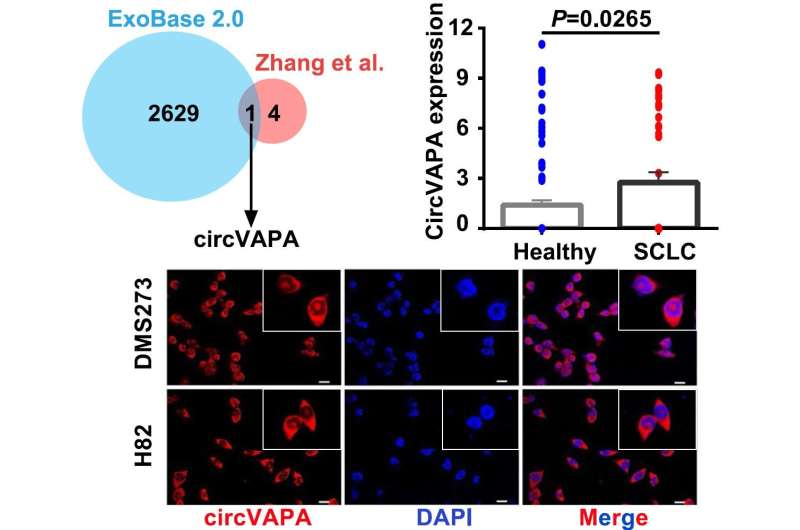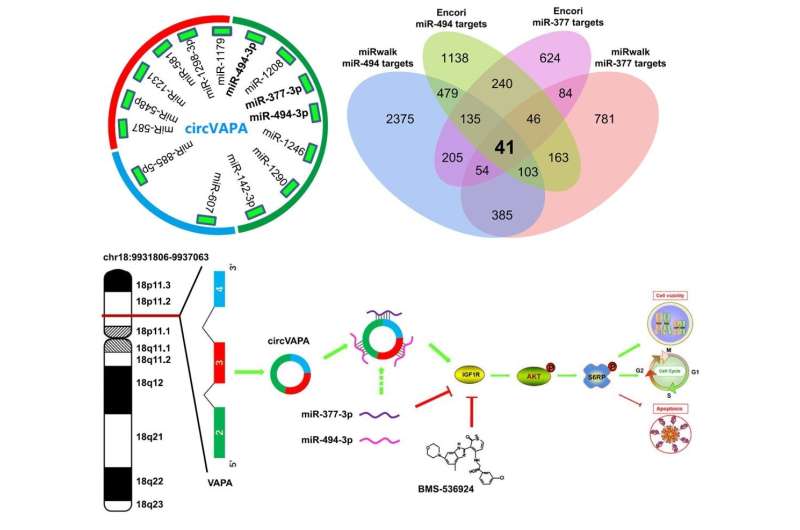Characterization of circVAPA. Credit: Hua Jinghan
Researchers led by Prof. Lin Wenchu from the Hefei Institutes of Physical Science (HFIPS) of the Chinese Academy of Sciences have proposed a mechanism by which circular RNA (circRNA) can promote the progression of small cell lung cancer (SCLC) in vitro and in vivo. Results were published in Molecular Cancer.
Small cell lung cancer is a recalcitrant cancer with limited treatment options. The overall 5-year relative survival rate for SCLC is less than 7%.
Covalently closed circRNAs are single-stranded endogenous RNA molecules with loop structures that play critical roles in cancer initiation, progression, and metastasis, yet the biological functions of circRNAs in SCLC are still elusive.
In this study, the researchers found that circRNA-circVAPA (circular vesicle-associated membrane protein-associated protein A), which was derived from exons 2-4 of the VAPA gene, exhibited higher expression levels in SCLC than the controls.
"CircVAPA exerts a cancer-promoting effect on SCLC by modulating the miR-377-3p and miR-494-3p/IGF1R/AKT axis," said Prof. Lin, "and this expands our knowledge about circRNAs in SCLC."
Furthermore, circVAPA depletion markedly enhanced the inhibitory effects of BMS-536924, an insulin like growth factor 1 receptor (IGF1R) kinase inhibitor in cellular and xenograft mouse models, providing a novel therapeutic strategy for treating SCLC.
CircVAPA promotes SCLC progression via the miR-377-3p and miR-494-3p/IGF1R/AKT axis. Credit: Hua Jinghan
More information: Jinghan Hua et al, CircVAPA promotes small cell lung cancer progression by modulating the miR-377-3p and miR-494-3p/IGF1R/AKT axis, Molecular Cancer (2022). DOI: 10.1186/s12943-022-01595-9
Provided by Chinese Academy of Sciences
























